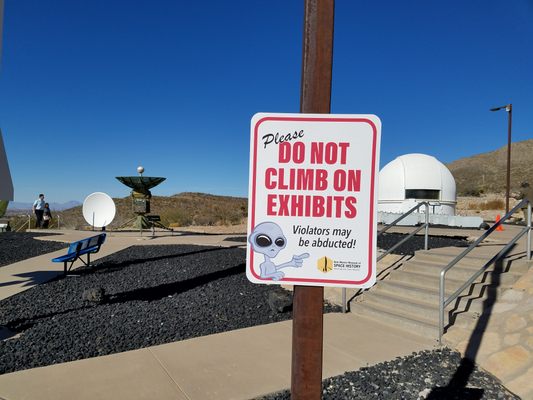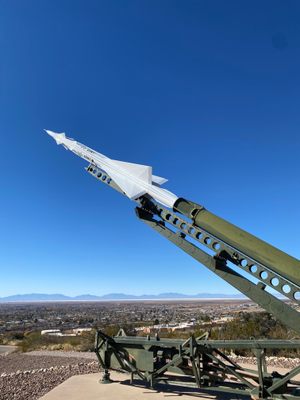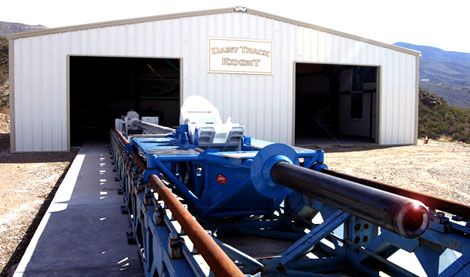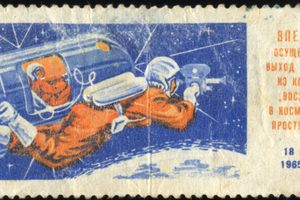About
Most Americans are familiar with New Mexico's place in the history of space exploration insofar as they associate the state with the site of the supposed Roswell UFO incident. More devoted space fans, however, know that New Mexico's Tularosa Basin, home to the Holloman Air Force Base and White Sands Missile Range, has long been a hub of experimentation and innovation that has done much to advance our understanding of the cosmos.
The New Mexico Museum of Space History, a division of the New Mexico Department of Cultural Affairs, showcases the state's long history of rocket launches, satellites, and simulations that helped make human space flight possible. The museum is home to numerous notable artifacts, including the coveralls worn by the only scientist to walk on the moon, the Daisy Track used at Holloman Air Force Base to test the effects of rapid acceleration and deceleration on both mechanical and biological systems, and the Sonic Wind I rocket sled, aboard which researcher John P. Stapp made history as the Fastest Man on Earth. The museum's Basin Overlook, meanwhile, offers visitors a spectacular view of the facilities where many of these experiments took place.
It's not all about New Mexico, though; the museum is also home to exhibits, such as the Living and Working in Space exhibit, that explore broader concepts of space exploration, as well as the International Space Hall of Fame, established in 1976 to celebrate the achievements of aeronautic pioneers worldwide.
One such individual is Ham, the first hominid to be successfully launched into and recovered from space. The space chimp's remains are interred in a grave in front of the museum's flagpoles.
Related Tags
Community Contributors
Added By
Published
August 1, 2013




































































